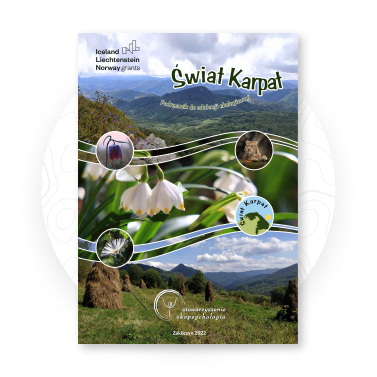
Anděra, M. & Horáček, I., 2005: Poznáváme naše savce. Sobotáles, Praha, s. 328.
Bashta, A.-T. & Potish, L., 2007: Ssavci Zakarpatskoj oblasti. Mammals of the Transcarpathian region (Ukraine). Nacionalna akademija nauk Ukrajiny, Institut ekologii Karpat, Užgorodskij nacionalnij universitet, Fond ochorony dikoj prirody (WWF) & Fond Vitli (Whitley Fund fo Nature), s. 258.
Begall, S., Červený, J., Neef, J., Vojtěch, O. & Burda, H., 2008: Magnetic alignment in grazing and resting cattle and deer. Proceedings of the National Academy of Sciences, 105(36): 13451–13455.
Bihari, Z., Csorba, G. & Heltai, M. (red.), 2007: Magyarországi emlőseinek atlasza. Kossuth Kiadó, Budapest, s. 360.
Decu, V., Murariu, D. & Gheorghiu, V., 2003: Chiroptere din România. Ghid instructiv şi educativ. Institul de Speologie „Emil Racoviţă“ al Academiei Române & Muzeul Naţional de Istorie Naturală „Grigore Antipa“, Bucureşti, s. 521.
Dungel, J., 1993: Savci střední Evropy. Jota, Brno, s. 158.
Dungel, J. i Gaisler, J., 2002: Atlas savců České a Slovenské republiky. Academia, Praha, s.150.
Gaisler, J., Zejda J., Knotek J. & Knotková L., 1997: Savci. Aventinum, s. 496.
Hell, P. & Slamečka, J., 1999: Medveď v slovenských Karpatoch a vo svete. PaRPRESS, Bratislava, s. 148.
Hell, P., Slamečka, J. & Gašparík, J., 2001: Vlk v slovenských Karpatoch a vo svete. PaRPRESS, Bratislava, s. 182.
Kaňuch, P., Danko, Š., Ceľuch, M., Krištín, A., Pjenčák, P., Matis, Š. i Šmídt, J., 2008: Relating bat species presence to habitat features in natural forests of Slovakia (Central Europe). Mammalian Biology, 73: 147–155.
Linnell, J., Salvatori, V. i Boitani, L., 2007: Guidelines for population level management plans for large carnivores in Europe. A Large carnivore Initiative for Europe report prepared for the European Commission. Final draft May 2007: 48–63.
Lupták, P., 2003: Slovenské mená cicavcov sveta. Zoologická záhrada, Bojnice, s. 219.
Martínková, N. & Dudich, A., 2003: The fragmented distribution range of Microtus tatricus and its evulutionary implications. Folia zoologica, 52(1): 11–22.
Mitchell-Jones, A. J., Amori, G., Bogdanowicz, W., Kryštufek, B., Reijnders, P. J. H., Spitzenberger, F., Stubbe, M., Thissen, J. B. M., Vohralík, V. & Zima, J., 1999: The atlas of European mammals. The Academic Press, London, s. 496.
Pelikán, J., Gaisler, J. & Rödl, P., 1979: Naši savci. Academia, Praha, s. 163.
Pucek, Z. i Raczyński, J. (red.), 1983: Atlas rozmieszczenia ssaków w Polsce. Atlas of Polish mammals. Państwowe Wydawnictwo Naukowe, Warszawa, s. 188 + mapy.
Spitzenberger, F., 2001: Die Säugetierfauna Österreichs. Bundesministerium für Land- und Fortswirthschaft Umwelt und Wasserwirtschaft, Graz, s. 895.
Šíbl, J., Holčík, J., Bohuš, M., Uhrin, M. & Valachovič, D., 1999: Ochrana fauny v Slovenskej republike. Prírodovedecká fakulta Univerzity Komenského & Slovenská poľnohospodárska univerzita, s. 206.
Witkowski, Z. J., Król, W. i Solarz, W. (red.), 2003: Carpathian list of endangered species. WWF International Danube-Carpathian Programme & Institute of Nature Conservation, Polish Academy of Sciences, Vienna, Austria & Kraków, Poland, s. 64.
Wołoszyn, B. W. & Bashta, A.-T. V., 2001: Nietoperze Karpat. Polowy klucz do oznaczania nietoperzy. Chiropterological Information Center, Bat Research and Protection Group & Institute of Ecology of the Carpathians NAN, Kraków – Lwów, s. 168.

